I know a list of 15 waterproofing mistakes made in a crawl space seems a bit extreme, but I wanted to share the mistakes we see homeowners and contractors make when fixing a flooded crawl space. Keep in mind many of these mistakes are made from cheapness or corner cutting and should be avoided. If you have seen a mistake not mentioned or have experienced one of these in your crawl space. Please let me know in the comments below.
No Sump Pump Basin – Mistake #1
First of all, these waterproofing mistakes are not listed in any particular order of severity but mostly commonality. The crawl space sump pump basin is left out of waterproofing projects a lot. The sump pump basin is vital to ensuring the pump has a clean space to remove water.
Often, crawl space contractors will lay a sump pump directly on the soil in a mud hole. All the mud and debris can and will damage the sump pump. It will also cause the sump pump to lose effectiveness over time. Sump pumps can get really hot if the float is locked in the on position. We see floats get stuck often when the sump pump is not properly installed in a basin.
Basin Not Buried Deep Enough – Mistake #2
A shallow sump pump basin is also very common among crawl space repair contractors and DIYers. I point this out in the $25,000 crawl space encapsulation redo video we did a few years back. A pest control company installed a sump pump but did not bury the basin deep enough.
Granted, water was still able to enter the basin from below. But a shallow sump pump basin will not allow water to enter from above. This is an important and needed feature if your crawl space takes on water from plumbing leaks. Water that can pool on the vapor barrier, due to pipe bursts, needs to have a direct path to the sump pump. Without it, your crawl space can become a swimming pool.
Avoid Mistake #3 – Pipe Not Buried Properly
The pipe not being buried properly is one mistake you should definitely avoid when waterproofing your crawl space. There tend to be a couple of issues we see when it comes to a french drain install in a crawl space.
- Pipe is too deep – Putting the drain tile too deep in the crawl space dirt will not allow the water to enter the pipe efficiently. Remember, you are only concerned about surface water in the crawl space. Placing the drain pipe at the footer seems like a good idea, but if the footer is really deep, 12 inches or deeper, this can hinder water from entering your drain pipe.
- Pipe is too shallow – We see this with lazy crawl space contractors. If you have hired a contractor and the price seems too good to be true or way cheaper than the competition, this could be why. As shown in the $25,000 redo video above, some contractors will not bury the pipe in the ground. It may be in the areas you look, but not further into the crawl space as shown in the video above.
Check the Waterproofing Contractors’ Work
Make sure your crawl space waterproofing is done by reputable contractors. Have them show pictures of the drain tile installed. At the very least, make the inspector aware you will expect to see pictures of it installed properly and see if their pricing stays the same. If it does, there is a good chance they will bury the french drain pipe properly. Also, ask what type of pipe they use. We use the Hydraway Drain System because it moves more water in basements, crawl spaces, and yard drainage applications.
No Crawl Space Sump Pump – Mistake #4
Many homeowners and contractors want to avoid installing mechanical devices in the crawl space so they choose a no-sump pump option. This could work if your home is on a hill and all of the yard slopes away, but most homes are built in flat or lowland areas where a sump pump is needed.
Avoid gravity-feeding the crawl space waterproofing pipe through the foundation wall and into the yard. It may work in light rains or as mentioned above, but eventually, the rainfall could overrun the flow of water allowed. The pipe must be installed at a significant pitch to handle the amount of water a crawl space can take on.
Having a sump pump with a high flow output is recommended. Some crawl spaces require multiple sump pumps to handle the water intrusion. The Flotec cast iron sump pumps we use have performed very well over many years of installation in both crawl spaces and basements.
Secure the Sump Pump – Waterproofing Mistake #5
The crawl space sump pump is very powerful when it turns on. Most installers of sump pumps, whether in a crawl space or basement, will create a 90-degree run straight out of the nearest foundation wall. Make sure you install the discharge line and anchor it to the floor above. This will keep the sump pump from jumping out of the basin. This will also keep the discharge line from cracking under the force of the sump pump.
Waterproofing Mistake #6 – No Check Valve
The check valve is a simple and necessary device. It keeps water from flowing back into the sump pump basin. In the picture above, if the sump pump system did not have a check valve, all the water in the discharge pipe above the sump pump would flow right back to the basin. This would cause the sump pump to cycle on and off which can damage the pump. Make sure check valves are installed on all sump pumps.
Install a Dranjer Drain to Avoid Mistake #7
The Dranjer Drain is a unique product overlooked in basement and crawl space waterproofing. Most contractors are only concerned about the flood water under the slab or plastic. But what happens to the water that gets on top of the vapor barrier or basement slab? The Dranjer Drain allows water to enter the sump pump basin from above. This gives the water access to the sump pump for discharge. This can keep your crawl space or basement from becoming a swimming pool.
Short Water Discharge Lines – Mistake #8
Water the pools around the home’s foundation can easily enter the crawl space or basement. This is why the sump pump discharge line should be ran far away from the foundation wall. A rule of thumb is a minimum of 15 feet but also make sure it is downhill of the foundation. Don’t be afraid to run the discharge line further if needed. The sump pump can move thousands of gallons of water per hour. Don’t allow that water to re-enter the crawl space or basement.
Ready to find out more?
Drop us a line today for a quote!
Click HereDrain Pipe with No Protection – Mistake #9
I have seen drain tile installed in expansive soils that did not have a filter media to keep the pipe clean. This sock material is designed to keep clay, silt, sand, and other clogging materials out of the waterproofing pipe. Make sure you use a product like the Hydraway Drain System with a strong geo-textile cover. This will protect the pipe from clogging.
Mistake #10 – Improperly Installed Vapor Barrier
This is a big one. Many contractors will quote installing a crawl space waterproofing system without properly installing a new vapor barrier. The crawl space vapor retarder is part of the waterproofing system. Crawl space plastic is also part of the humidity control system. Using the old nasty loose-laid vapor barrier is not recommended for long-term waterproofing or humidity control.
Make sure a new vapor barrier is installed properly. This includes overlapping and sealing seams plus properly securing to the foundation. Securing the plastic will keep it from moving when your crawl space takes on heavy rain water.
Don’t Paint the Foundation Walls – Mistake #11
The foundation wall can hold water. The hydrostatic pressure inside the wall can be great. Many waterproofing paints cannot handle this pressure long-term. The taller the foundation wall, the higher the pressure. Most waterproofing paints are rated at 20 to 35 PSI (pounds per square inch) of water pressure. And that’s if the paint is applied properly. Avoid waterproofing paints and use the vapor barrier instead.
Mistake #12 – No Sump Pump Battery Back-up
When is your crawl space or basement more likely to flood? When is your area more likely to lose power? Usually, most will answer, “during a storm.” Taking on lots of flood water in your basement or crawl space without electricity will not turn out well. Make sure you invest in a great sump pump battery back-up system like the Pump Sentry by SEC. The Pump Sentry can be installed on new sump pumps or retrofitted for older systems. No need to replace your current sump pump.
No Downspout Extensions is Mistake #13
Just like the proper sump pump discharge line, properly installed downspout extensions are vital. Downspouts that dump water directly on the foundation will not only cause flooding of the basement or crawl space, but over time you may see your footers begin to sink or fail. This can cause foundation problems like cracked walls, bowing walls, or worse. Extend downspouts far enough to get all the roof water safely away from your home.
#14 – Poorly Installed Crawl Space Door
I have seen crawl space doors that allow tons of water to enter crawl spaces. Many times the crawl space door does not have a threshold installed. We always install a threshold on doors to prevent water from entering at the base of the door. Even the best crawl space encapsulation cannot stop water from a poorly installed crawl space door.
No Water Alarm – Waterproofing Mistake #15
How often do you go in your crawl space? I am guessing never. Having a water alarm installed near the sump pump, door, dehumidifier and other moisture prone areas is a great way to alert you of problems as they happen.
We got a call from a homeowner that did crawl space waterproofing years ago. They decided to sell their home but the crawl space was flooded. They did not have a warning system to alert them the sump pump had failed to discharge the water properly. Having water alarms and humidity readers are vital from crawl spaces and basements.
Contact Crawl Space Ninja for Basement Waterproofing and Encapsulation
Please contact us to schedule your assessment to fix your crawl space, basement issue.
Do you need help with mold removal, crawl space encapsulation, crawl space insulation, vapor barrier, waterproofing, foundation repair, basement waterproofing, or controlling humidity in your crawl space?
If you live in Georgia, Delaware, North Carolina, South Carolina, Tennessee, or Kentucky, Crawl Space Ninja can help!
Also, let us know in the comments below if you have an idea for a new blog topic.
DIY Crawl Space Repair
Perhaps you’d like to tackle your own crawl space repair. Visit our DIY Store.
Join Crawl Space Ninja as an Owner
Learn about Crawl Space Ninja Franchise opportunities.
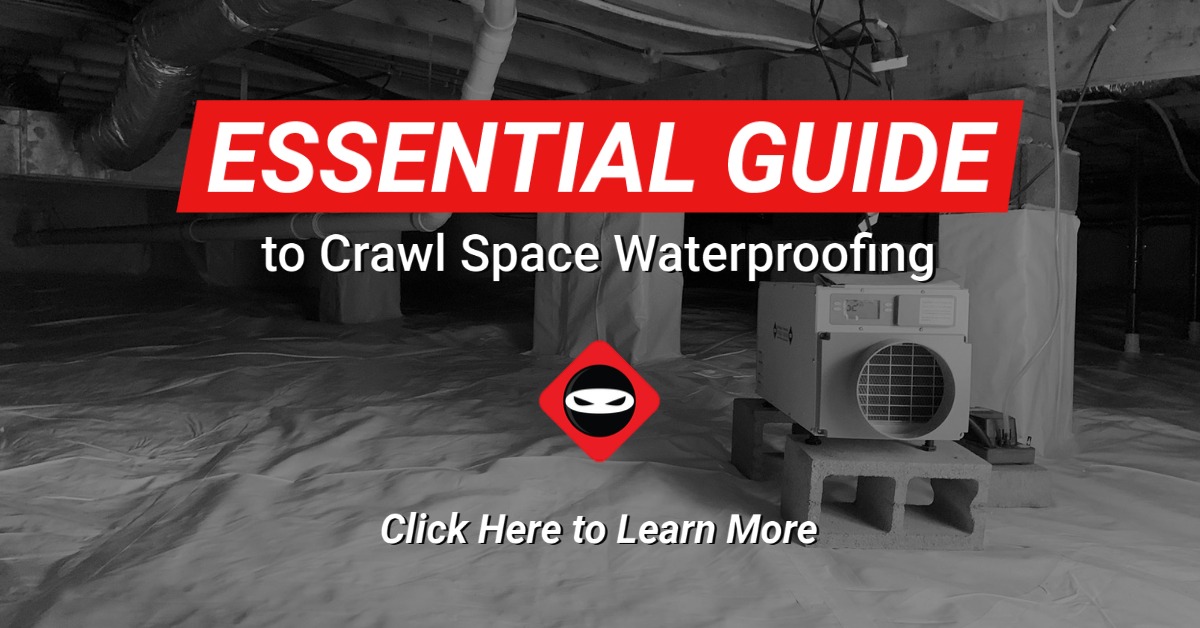


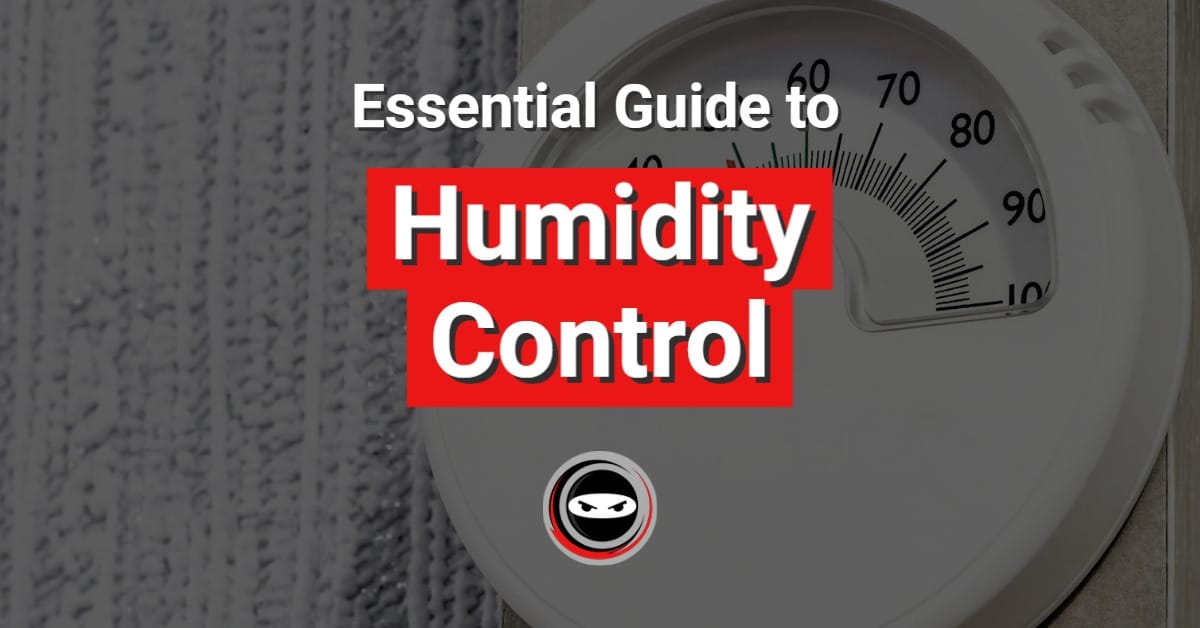

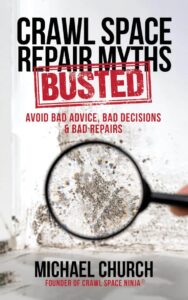
Michael Church’s Crawl Space Repair Myths-Busted book was written to help you Avoid Bad Advice, Bad Decisions, & Bad Repairs.
“This book is the Cadillac for crawl space information and Michael Church is your experienced driver. What can I say? It’s just an amazing read.” 5.0 out of 5 stars The real deal.


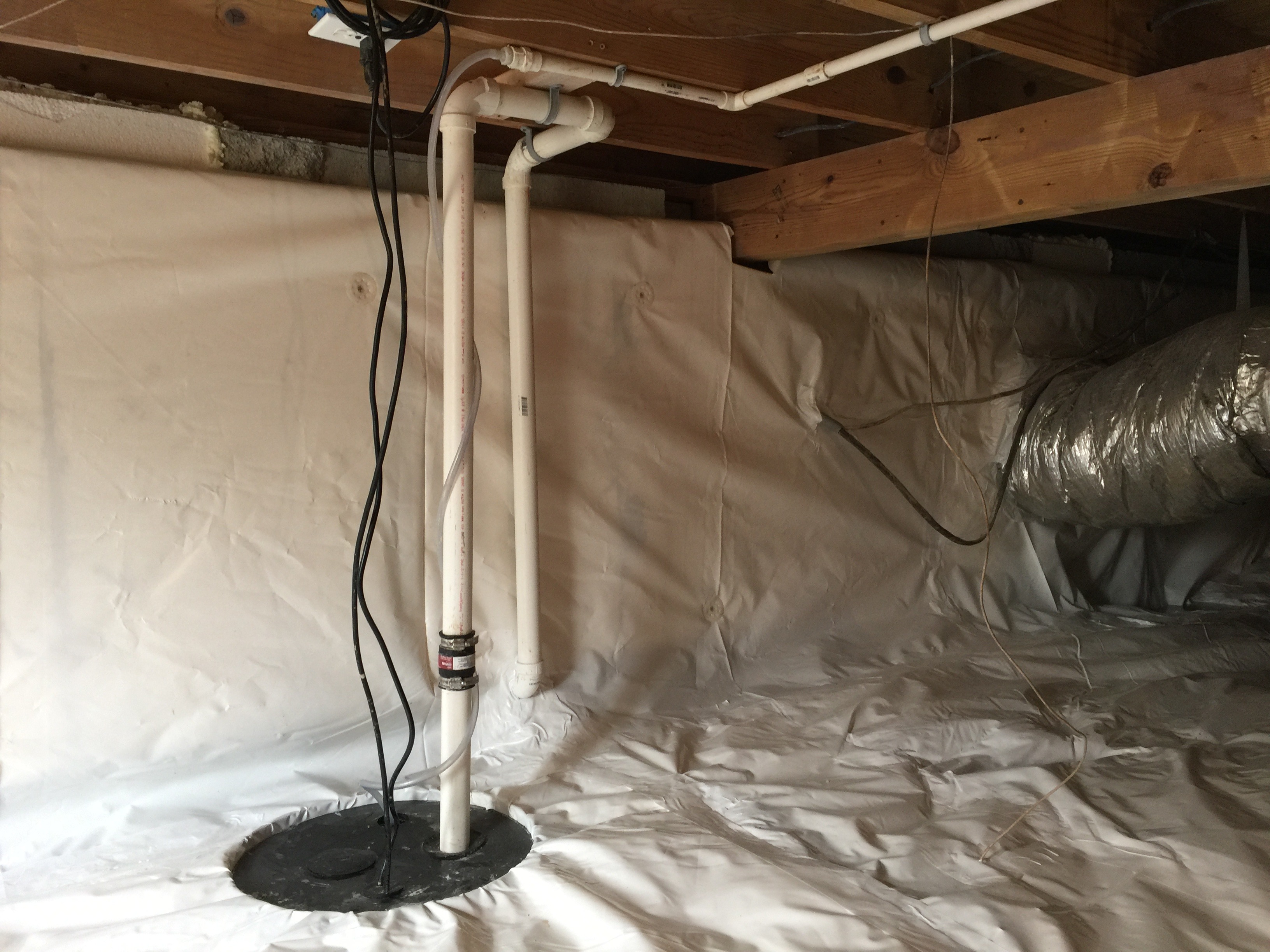
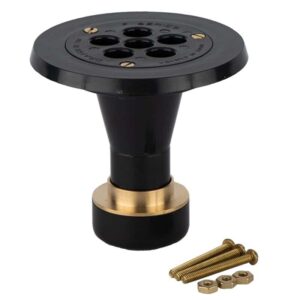
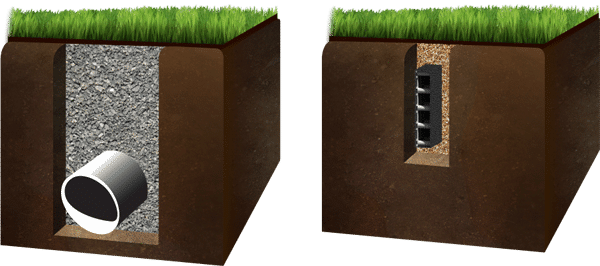
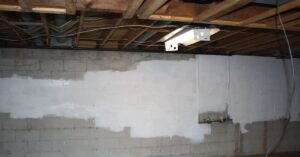
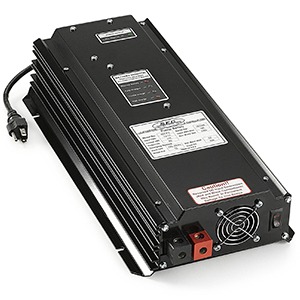
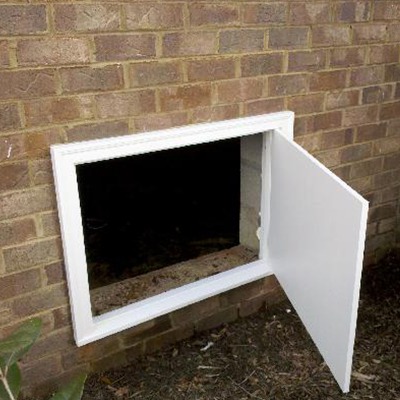
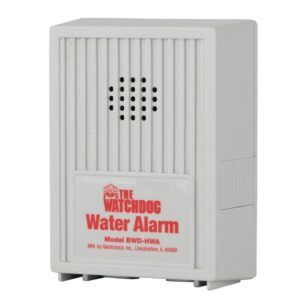
2 thoughts on “Avoid These Waterproofing Mistakes in a Crawl Space”
Sealed off vents in crawl space,but now I’m getting a lot of condensation.
Hi, you may need a dehumidifier, did you install one?